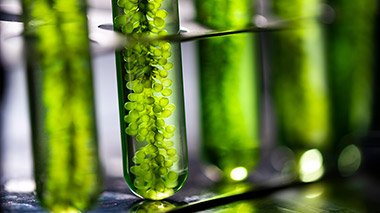Method extracts antioxidant nutrients from corn processing waste

A process for extracting nutritious antioxidant dietary fibers from corn starch production waste could turn tons of nearly-worthless bran into a valuable, circular resource.
Corn bran is rich in the potent antioxidant, ferulic acid. Unfortunately this anti-inflammatory is trapped in an insoluble material matrix that humans can’t digest. That is until now.
Researchers at KTH Royal Institute of Technology have reported a way to unlock soluble ferulic acid-rich dietary fibers from this insoluble matrix, and they developed a hydrogel that delivers it to the intestines where it can prevent cell oxidation and improve gut health.
Due to its insolubility, corn bran is a low-value sidestream from cornstarch production, which is otherwise discarded or sold off for animal feed. But instead of letting it go to waste, the researchers used a method called subcritical water extraction to isolate the soluble fiber part of the bran that contains ferulic acid.
Francisco Vilaplana , Associate Professor in the Division of Glycoscience at KTH Royal Institute of Technology, says the next step is to create a hydrogel by crosslinking this soluble ferulic acid-rich dietary fiber part using natural enzymes (laccase and peroxidase). The hydrogel can be digested as a prebiotic for gut health, or even used as a treatment for wounds, since it counteracts oxidative stress and contributes to healing.
The method was published in the scientific journal, Green Chemistry.
The global market for cornstarch is estimated at more than 120 million metric tons, and is expected to increase to 160 million metric tons by 2026. In cornstarch processing, as much as 15 percent of the kernel is discarded as fiber, or corn bran, Vilaplana says. “That’s a huge industrial sidestream.”
He says the new technique addresses the worldwide concern about food waste, in terms of sustainability and greenhouse gas emissions.
“We showed that we can upgrade a food side stream into a valuable material for both food and biomedical applications that could mitigate inflammatory processes.”
Text and photos by David Callahan

